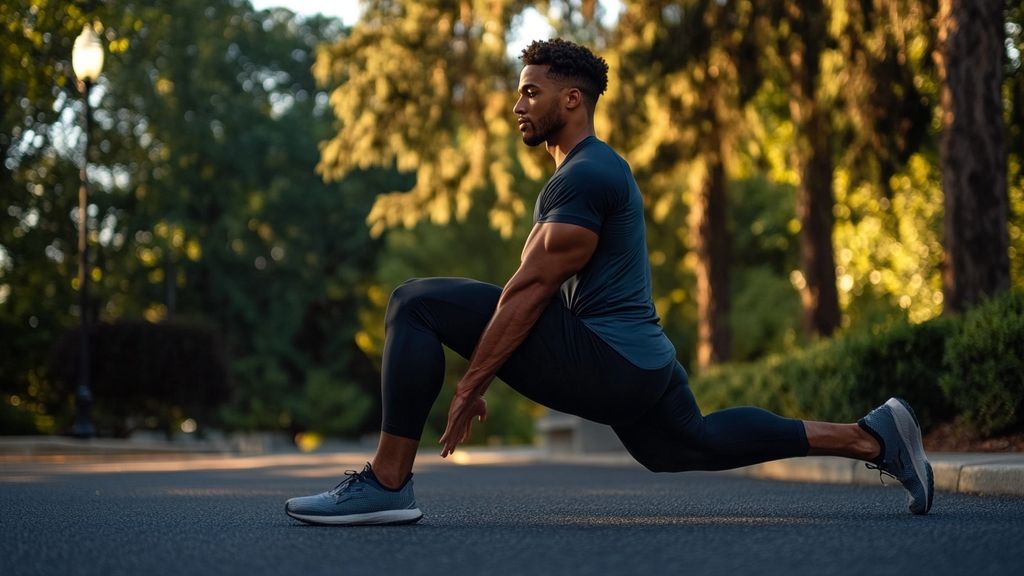CrossFit is renowned for its intensity and variety, but one of the less talked about aspects is how it can significantly improve mobility and flexibility. As athletes push their limits, they often neglect these crucial components. Yet, mastering these elements is essential for maximizing performance and preventing injuries. Integrating mobility work into your routine allows for better movement patterns and enhanced physical capabilities. This article explores the depths of how CrossFit enhances mobility and flexibility, offering valuable exercises and insights.
The Importance of Mobility and Flexibility in CrossFit
Many players, when transitioning into CrossFit, may overlook the significance of mobility and flexibility training. These two aspects are crucial not only for performance but also for injury prevention. Mobility refers to the ability of a joint to move actively through a range of motion, while flexibility involves muscle lengthening for movement. This distinction is vital, as both contribute to an athlete’s overall functionality.
The Link Between Mobility and Performance
Improving mobility through CrossFit not only enhances performance in lifts but also improves overall functional movements. Many CrossFit workouts involve complex movements requiring efficiency across multiple joints.
For example, a well-executed squat requires a combination of hip and ankle mobility. Athletes with restricted mobility may struggle with depth, leading to compensatory movements that can cause injuries. Incorporating targeted mobility drills can help unlock better movement capability, reducing the risk of injury and enhancing strength performance.
Essential Mobility Exercises for CrossFit Athletes

To exalt your mobility levels, consider the following essential exercises:
Hip Flexor Stretch
The hip flexors are a common area of tightness among CrossFit athletes, which can hinder performance. To effectively stretch them, kneel on one knee with the other foot placed in front, creating 90-degree angles at both knees. Gently push forward into the stretch, holding for 20-30 seconds on each side.
Shoulder Dislocates with Resistance Band
This exercise aids in increasing shoulder mobility, critical for overhead lifts. Using a resistance band, hold it wide in front and lift overhead, then behind you to strengthen the shoulder.
Thoracic Extension with Foam Roller
Placing a foam roller vertically along your spine helps improve thoracic extension. By interlacing hands behind the head and gently extending backward, you enhance upper back mobility.
Incorporating Mobility Drills into Your Routine
Setting aside dedicated time for mobility work can significantly elevate your CrossFit experience. It’s essential to integrate these movements consistently. For instance, performing drills before the main workout primes the body, allowing improved performance.
Including mobility circuits at least twice weekly can yield improvements in flexibility and reduce injury rates. The key is patience and regular practice to witness substantial benefits.
Combining Strength Training and Mobility
Strength and mobility are two sides of the same coin. While CrossFit inherently involves strength training, integrating mobility-focused routines can optimize performance. Many exercises improve mobility while enhancing overall strength, which is why it’s beneficial to marry the two.
Integrating CrossFit and Yoga
Yoga complements CrossFit excellently. Many CrossFit enthusiasts find that yoga helps alleviate tightness and enhances flexibility. A practice that combines both disciplines can further enhance your performance.
Common Myths About CrossFit and Mobility

There are many misconceptions surrounding CrossFit and mobility training. One prevalent myth is that flexibility and mobility are only necessary for advanced athletes. In reality, anyone, regardless of skill level, can benefit from mobility work.
Addressing Joint Concerns
Another common concern is that CrossFit may be detrimental to joint health. However, when performed with correct form and proper mobility exercises, CrossFit can be safe for the joints. Athletes should prioritize maintaining mobility to support overall joint function.
Tracking Your Mobility Progress
Consistency is essential when it comes to improving mobility. Keeping track of your progress through warm-ups and workout routines can aid in identifying areas that require more focus.
Utilizing Tools to Aid Improvement
Consider incorporating tools like foam rollers, lacrosse balls, and bands into your routine to enhance mobility. These tools assist in loosening tight muscles and increasing joint range of motion, contributing to greater functionality during CrossFit sessions.
Ultimately, enhancing mobility and flexibility in CrossFit establishes a robust foundation for athleticism. By dedicating time and effort to mobility training, athletes will notice significant performance improvements while minimizing injury risks. As CrossFit continues to evolve, prioritizing flexibility and mobility will remain essential for anyone entering the dynamic world of fitness.
